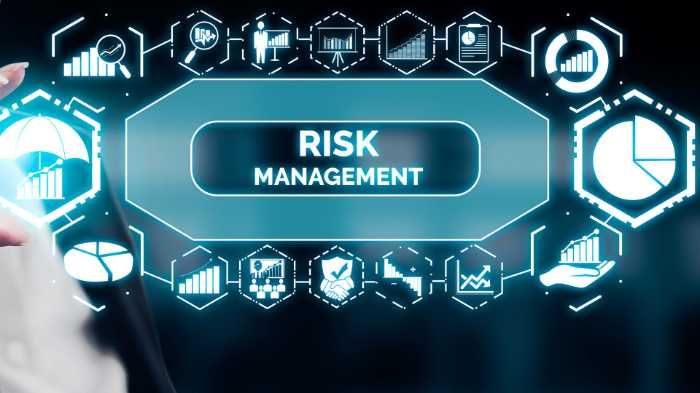What is Operational Risk Management (ORM)? Quite simply, it is the process of identifying and managing risks to an organization’s operations. This includes any activity or event that could adversely affect an organization’s ability to achieve its objectives. The Operational Risk Management function is responsible for implementing and overseeing this process. In this blog post, we will discuss the role of ORM in organizations and provide some tips on how to effectively manage operational risks.
- What is Operational Risk Management (ORM)?
- What is the role of operational risk management in organizations?
- How to Effectively Manage Operational Risks?
- Tips for Implementing an ORM Process
- Other types of risks
- What is an enterprise risk management program?
- What is the role of risk managers?
- FAQs
What is Operational Risk Management (ORM)?

Operational risk management is the process of identifying, analyzing, and responding to risks that could adversely impact an organization’s ability to achieve its strategic objectives. The goal of operational risk management is to protect and enhance shareholder value by minimizing exposures to potential losses.
Operational risk management includes a wide range of activities, from risk identification and assessment to risk mitigation and monitoring. It is a continuous process that should be integrated into all aspects of an organization’s operations. Although operational risk management is often associated with financial institutions, it is relevant to all businesses.
Effective operational risk management requires a comprehensive understanding of the risks faced by an organization and the ability to develop and implement effective mitigation strategies.
What is the role of operational risk management in organizations?

Operational risks can come from a variety of sources, including fluctuations in the marketplace, changes in technology, natural disasters, and even human error. By identifying and assessing these risks, organizations can develop plans to minimize their impact and protect their interests. Operational risk management is an essential tool for any organization seeking to safeguard its operations and ensure its long-term success.
How to Effectively Manage Operational Risks?
There are three key elements to effective operational risk management:
1. Identification
The first step is to identify risks that could impact business operations. This can be done through a variety of methods, including reviewing past incidents, conducting audits, and talking to employees. By taking the time to identify potential risks early on, businesses can be better prepared to deal with them if they do occur. In many cases, identification can help to prevent problems from arising in the first place. In short, it is an essential part of any operational risk management strategy.
2. Analysis
In order to effectively manage operational risk, it is essential to analyze potential risks in order to determine their likelihood and potential impact. This process typically begins with a review of available data, which can help to identify patterns and trends.
This data can come from a variety of sources, including financial reports, nonfinancial reports customer surveys, and employee interviews. Once this data has been gathered, it must be carefully analyzed in order to identify potential risks. Once potential risks have been identified, they must be analyzed in order to determine their likelihood and potential impact. This process usually involves creating models or simulations in order to test different scenarios.
By doing this, businesses can get a better understanding of the potential impacts of various risks. This information can then be used to develop plans for how to best mitigate or avoid these risks.
3. Response
In order to effectively manage operational risk losses, organizations must have a plan for responding to risks. This might involve changing policies and procedures, investing in new technology, or increasing training for employees. The goal of the response plan is to mitigate the potential impacts of risks and to ensure that the organization can continue to function.
The response plan should be designed to address both immediate and long-term needs and should be reviewed and updated on a regular basis.
By following these steps, organizations can effectively manage risk and avoid costly disruptions.
What are the key risk indicators?

There are a number of key risk indicators that businesses need to be aware of. Here are some of the most important ones:
1. Financial indicators
These include measures such as profitability, solvency, and liquidity ratios. They give an indication of a company’s financial health and its ability to meet its obligations.
Profitability ratios show how much profit a company is making relative to its revenue or expenses. Solvency ratios measure a company’s ability to pay its debts, while liquidity ratios show how easily a company can convert its assets into cash. All three of these measures are important in assessing a company’s financial health.
2. Operational indicators
Operational indicators are a key risk indicator for any business. They measure things such as production levels, on-time delivery, and customer satisfaction levels. By tracking these indicators, businesses can get a good indication of their operational efficiency and effectiveness. This information is essential for making decisions about where to allocate resources and how to improve operations.
Additionally, operational indicators can be used to benchmark a company’s performance against competitors. By understanding how they stack up, businesses can make changes to improve their operations and better compete in the marketplace. Compliance indicators
These measure compliance with regulations and standards. They give an indication of a company’s risk exposure in terms of legal and regulatory risk.
3. Reputational indicators
Reputational indicators are essential measures of a company’s health. These measure things such as media coverage, employee satisfaction, and customer satisfaction levels. They give an indication of a company’s reputation and how it is regarded by key stakeholders. By tracking these indicators, companies can stay ahead of potentially damaging problems and protect their hard-earned reputations.
4. Strategic indicators
Strategic indicators are important measures of a company’s success. They can include things like market share, growth rate, and competitive position. By tracking these indicators, companies can get a sense of their competitive strength and future prospects.
This information is crucial for making informed decisions about where to allocate resources. For example, if a company sees that its market share is declining, it may choose to invest more in marketing and product development.
On the other hand, if a company’s growth rate is slowing, it may choose to focus on expansion into new markets. By tracking strategic indicators closely, companies can stay one step ahead of the competition and make sure they are positioned for long-term success.
Tips for Implementing an ORM Process
7 Tips for Implementing an Operational Risk Management Process
- Define what operational risk is for your organization.
- Identify the potential sources of operational risk.
- Develop scenarios to assess the impact of operational risk.
- Implement controls to mitigate operational risk.
- Monitor and review the effectiveness of controls on a regular basis.
- Update the operational risk management process as needed.
- Communicate the results of the operational risk management process to stakeholders
Free Verified Carbon Calculators.
Erase Your Carbon Footprint in less than 5 Minutes
What are the common operational risks?
Operational risk is the risk of loss resulting from inadequate or failed internal processes, people, and systems or from external events. This can include:
1. Legal risk
Legal risk is the chance that a company will face legal action as a result of its business activities. This can include anything from being sued for discrimination or breach of contract to being fined for environmental violations. Companies typically take steps to minimize their legal risk by ensuring compliance with relevant laws and regulations, adopting policies and procedures to reduce the likelihood of misconduct, and carrying insurance to cover the costs of any legal action that does arise.
2. Reputational risk
Reputational risk is the possible financial loss that could occur if a company’s reputation is damaged. This could happen if the company was involved in a scandal or if negative information about the company was released. Reputational risk can also occur if a company’s products or services are not well-received by customers. If a company’s reputation is damaged, it may have difficulty attracting new customers and retaining existing ones.
3. Financial risk
When it comes to finances, the risk is the chance an investment will lose value. There are different types of financial risk, but all involve the potential for loss. Volatility, for example, is a measure of how much an investment’s value can change over time. Investments with higher volatility are considered riskier because there’s a greater chance they will lose value in the short term. Credit risk is the risk that a borrower will default on a loan, and interest rate risk is the risk that changes in interest rates will adversely affect investments. While all forms of financial risk can lead to loss, understanding and managing risk is essential to successful investing.
4. Fraud risk
Fraud risk is the likelihood that a company will be a victim of fraud. There are two main types of fraud: internal and external. Internal fraud is committed by employees, while external fraud is committed by outside parties such as customers or vendors. Companies can take steps to reduce their fraud risk, such as instituting background checks or implementing anti-fraud controls.
5. Process risk
This is about the generic risks associated with the way business processes or operational processes are carried out. In other words, it is the risk that something will go wrong in the way that work is undertaken and that this will have an impact on the achievement of objectives. There are a number of factors that can contribute to process risk, including poor design, inadequate controls, human error, and changes in technology or the external environment.
6. Strategic risk
Strategic risks are those that could potentially impact an organization’s ability to achieve its goals. These risks can come from a variety of sources, including changes in the marketplace, new technologies, or shifts in customer behavior. While it can be difficult to anticipate and plan for all strategic risks, organizations can take steps to mitigate their impact.
For example, they can build flexibility into their plans, create contingency plans, and monitor changes in the marketplace closely. By doing so, they can reduce the chances that a strategic risk will derail their business.
Operational risks can arise from a variety of sources, including human error, natural disasters, cyberattacks, and supply chain disruptions. Ultimately, operational risks can lead to financial losses, legal liabilities, and damage to an organization’s reputation. To mitigate these risks, organizations need to put in place robust internal controls and procedures. They also need to have contingency plans in place to deal with disruptions. By taking these measures, organizations can reduce the likelihood of suffering losses due to operational-type risks.
Other types of risks
Following are some of the other types of risks that can affect the well-being of a business:
1. Cybersecurity risk
Cybersecurity risk refers to the potential for losses due to cyber-attacks. This includes attacks on computer networks, internet-connected devices, and the data stored on them. Cybersecurity risks are a big concern for the capital markets and banking system, as they can lead to financial losses and disruptions to services. In recent years, there have been a number of high-profile cyber attacks that have caused significant damage, so it is important for organizations to take steps to protect themselves from this type of threat.
2. Third-party risk
Third-party risk is the potential for harm to an organization when it outsources part of its business to another company. This can include financial loss, data breaches, or reputational damage. By carefully vetting third-party partners and maintaining ongoing communication, organizations can reduce their exposure to third-party risk.
3. Market risk
Market risk is the risk of losses in investments due to factors that affect the overall stock market or specific markets. These factors can include economic conditions, political changes, and natural disasters. While this risk can be difficult to predict, diversifying one’s portfolio can help to mitigate some of the potential losses. For example, investing in a mix of stocks, bonds, and cash can protect against sudden market swings. Additionally, investing in different types of assets (such as domestic and foreign stocks) can also help to reduce market risk.
4. Liquidity risk
Liquidity risk is the risk that a company will not be able to meet its financial obligations as they come due. This can happen if a company does not have enough cash on hand to pay its bills or if it cannot find willing buyers for its assets. Liquidity risks can lead to financial distress and even bankruptcy. As such, it is important for companies to manage their liquidity risks carefully. One way to do this is to maintain a strong relationship with their lenders so that they can access funding when needed. Additionally, companies can keep cash on hand or invest in short-term assets that can be quickly converted into cash if necessary.
5. Compliance risk
Compliance risk is the risk that a company will face regulatory fines or other penalties for violating laws or regulations. This type of risk is often divided into two categories: regulatory risk and legal risk. Regulatory risk is the risk of violating government regulations, while legal risk is the risk of violating contracts or other legal agreements. Compliance risks can be difficult to manage, as they often involve complex laws and regulations. Companies must carefully assess their compliance risks before taking any actions that could potentially lead to penalties.
What is an enterprise risk management program?
Enterprise risk management (ERM) is a framework for managing an organization’s overall risks. It provides a holistic view of an organization’s risks, allowing decision-makers to identify and manage potential risks before they materialize. An enterprise risk management program is not a one-time event or a software application; rather, it is an ongoing process that should be embedded into the fabric of an organization. The goal of ERM is to help organizations proactively manage risks rather than reactively responding to them after they have occurred.
What is the role of risk managers?

Risk managers play a vital role in today’s business world. They are responsible for developing and implementing risk management practices that can help protect a company from potential operational risk events. This can include everything from developing a risk management plan to creating an operational risk framework. At some firms, these managers also execute business strategies. In recent years, the role of operational risk managers has become even more important in the wake of the global financial crisis. As companies strive to control operational risk, the expertise of risk managers is essential.
What is an operational risk management program?
An effective operational risk management program will take a data-driven risk management approach to risk assessment and measurement, using tools such as scenario analysis and Monte Carlo simulations. By understanding the potential impact of operational risks, organizations can develop plans to mitigate or avoid them altogether. In some cases, operational risks can be insured against, providing another layer of protection for businesses. By taking a proactive approach to managing operational risk, businesses can protect themselves from potentially devastating events and execute their business strategy with confidence.
Conclusion
Operational risk management is the process of managing potential risks to an organization’s operational stability. This can include risks related to financing, compliance, market, and liquidity. By proactively assessing and managing these risks, organizations can reduce their exposure to potential threats. Risk managers play a vital role in risk management, and their expertise is essential for companies looking to control operational risk.
FAQs

What is operational risk management in banks?
Operational risk management is the process of identifying, assessing, and responding to risks that could adversely affect a bank’s ability to meet its operational objectives. Banking supervision agencies have long recognized the importance of productive operational risk management in ensuring the safety and soundness of banks. In recent years, these agencies have made significant improvements in their expectations for control effectiveness and risk identification. In addition, they have encouraged banks to conduct self-assessments of their controls and to take action to address any critical vulnerabilities. Senior management at a bank is responsible for overseeing the operational risk management process and ensuring that it is conducted effectively.
How can a business unit ensure safety from operational risk?
A business unit can ensure safety from operational risk by implementing a robust risk management program. The program should include measures to identify, assess, and control risks. Additionally, the program should be regularly reviewed and updated to ensure that it remains effective. By taking these steps, a business unit can minimize the likelihood of experiencing an incident that could result in harm to employees, customers, or other stakeholders.
What are the most common operational risk types?
The most common operational risk types are risks related to people, processes, technology, and data. Operational risks can also be categorized as financial, compliance, or business risks. Risk management is the process of identifying, assessing, and controlling risks. Operational risk management includes activities such as setting risk appetite and limits, measuring and monitoring risk, and incident and crisis management.
What is data-driven risk measurement?
Data-driven risk measurement is a process of using data to assess and manage risks. This data can come from a variety of sources, including financial reports, customer surveys, and data gathered from social media. By understanding the data, organizations can identify potential risks in their business practices and put in place strategies to mitigate them. This approach can help businesses to avoid costly mistakes and make more informed decisions about where to allocate resources.
Terms and Definitions
- ORM Process: Operational Risk Management (ORM) is a systematic process for managing the risks associated with everyday operations. It involves identifying, analyzing, and addressing operational risks through a combination of preventive measures, risk mitigation strategies, and monitoring activities. ORM helps identify, assess, and manage potential losses due to operational errors or other unforeseen events. The goal of ORM is to minimize and avoid losses by using proactive measures that help reduce organizational downtime and financial losses.
- Strategic Risk vs Operational Risk: Strategic risk refers to the risk associated with achieving long-term objectives such as market share, competitive advantage, and customer satisfaction. This type of risk typically arises from an organization’s strategic decisions or business strategies. On the other hand, operational risk refers to the day-to-day risks associated with running an operation or business unit such as compliance with laws and regulations, employee safety, production quality, and efficiency. Compared to strategic risks, operational risks are more immediate in nature since they affect short-term performance metrics such as revenue, costs, and profits. Both types of risk should be managed carefully since they have the potential to negatively impact an organization’s success if not addressed in a timely manner.
- Operational risk management is the process of identifying, assessing, controlling, and monitoring risks that arise from the day-to-day operations of a company. The purpose of this practice is to protect the organization from the negative consequences of unexpected events that can disrupt business activities and cause financial losses. Operational risks can come from various sources, such as human error, system failures, cyber-attacks, fraud, compliance issues, or natural disasters. Effective operational risk management can help companies anticipate and prevent problems, enhance resilience, and improve performance. This practice involves a structured and continuous approach to identifying and evaluating risks, implementing controls and mitigation measures, monitoring and reporting, and reviewing the effectiveness of the risk management framework. Operational risk management is a critical component of overall enterprise risk management, and it can help companies achieve their strategic objectives while balancing risk and reward.

Dean Emerick is a curator on sustainability issues with ESG The Report, an online resource for SMEs and Investment professionals focusing on ESG principles. Their primary goal is to help middle-market companies automate Impact Reporting with ESG Software. Leveraging the power of AI, machine learning, and AWS to transition to a sustainable business model. Serving clients in the United States, Canada, UK, Europe, and the global community. If you want to get started, don’t forget to Get the Checklist! ✅
